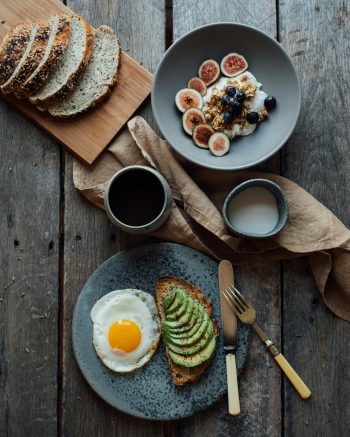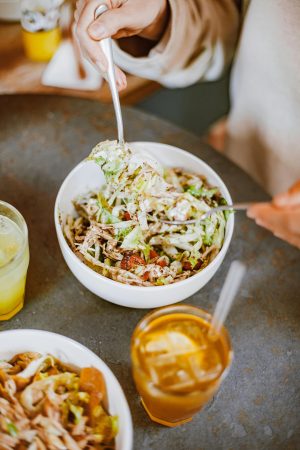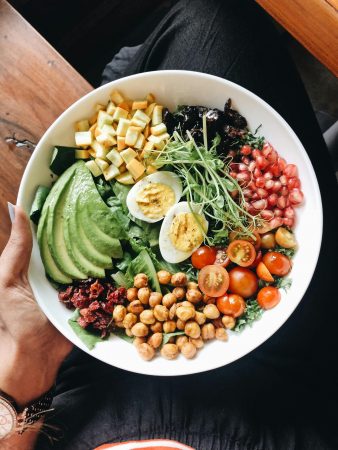Carbs, proteins, and fats – the holy trinity for a balanced diet. However, carbs and fats often get shunted to the side because they’ve been labelled as “bad” for you. While they can cause issues if you consume them in excess.
It’s all about striking the right balance with these macronutrients. Getting it right can boost how you feel, perform better in the gym or for your sport, and speed up recovery time. Here’s how much you need, and how you can tailor your portions of carbs, proteins and fats ratios to suit your goals.
Carbohydrates
Carbs are your body’s primary energy source, powering you through everything from workouts to busy workdays. They’re like the fuel in your tank—essential for keeping you moving and feeling energised.

Pexels
- How much? Aim for 45–65% of your total daily calories.
- Why do you need them? Carbs break down into glucose, which fuels your brain, muscles, and organs. Without enough, you might feel sluggish or experience brain fog. They’re also essential for muscle recovery and support digestive health (thank you, fibre!).
- Best sources: Go for complex carbs like whole grains, vegetables, fruits, and legumes. These slow-release carbs keep you full for longer and help you avoid those annoying energy crashes.
Quick tip: Keep simple carbs like cakes and candy in check—they cause rapid blood sugar spikes that lead to energy dips soon after.
Protein
Protein is the superstar of muscle repair and growth, but it does so much more. Think of it as your body’s construction crew—building, maintaining, and repairing tissues while supporting immune function and hormone production.

Pexels
- How much? Protein should make up 10–35% of your daily calories.
- Why do you need it? Your body can’t store protein, so you need a steady intake to maintain muscle mass and overall health. Protein also helps you feel fuller for longer, making it a key player in weight management.
- Best sources: Opt for lean meats like chicken, turkey, and fish, along with plant-based options like beans, lentils, tofu, and dairy products.
Quick tip: Not all proteins are created equal. Animal-based proteins are complete (containing all essential amino acids), while plant-based proteins may require some combo foods (think beans and rice) to ensure you’re getting all your nutrients.
Fats
Despite their bad rap, fats are crucial for brain function, hormone production, and vitamin absorption. The key? Choose the right kind of fats.

Pexels
- How much? Fats should make up 20–35% of your daily calories.
- Why do you need them? Fats help store energy, maintain healthy cells, and—let’s not forget—make your meals taste great while keeping you satisfied for longer.
- Best sources: Reach for healthy fats like avocados, nuts, seeds, olive oil, and fatty fish like salmon. Unsaturated fats are good for your heart and overall well-being.
Quick tip: Avoid trans fats, often found in processed and fried foods, as they can increase your risk of heart disease. Stick to healthier fats like those in olive oil and nuts.
What does a balanced plate look like?
So, how do you bring all these macronutrients together on your plate? A simple guideline is:
- Carbs = 50% of your plate: Veggies and fruits (mostly carbs, packed with fibre).
- Protein = 25% of your plate: Lean protein (like chicken, tofu, or legumes).
- Fats = 25% of your plate: Whole grains and healthy fats.

Pexels
Your exact macronutrient balance will depend on your goals and lifestyle:
- For active people or athletes: You might need a higher protein intake to support muscle repair and recovery.
- For those with a more sedentary lifestyle: Consider reducing your carb intake and focusing on lean proteins and healthy fats.
Tailoring your macronutrients to your goals
Whether you’re aiming to lose weight, build muscle, or simply maintain a healthy balance, tweaking your macronutrient intake can make a big difference:
- Weight loss: Consider a higher protein intake (around 30%) to keep hunger at bay and preserve muscle while burning fat. Stick to about 40% carbs (preferably complex ones) and 30% fats.
- Muscle gain: If you’re bulking up, you’ll need plenty of protein to repair and grow muscle, aiming for about 30–35% of your calories from protein. Keep your carbs high (about 40–50%) to fuel your workouts and replenish muscle glycogen stores. Try to keep fats at around 20–30%.
- Overall health: For maintaining a balanced lifestyle, stick to the general guideline of 45–65% carbs, 10–35% protein, and 20–35% fats.
Special diets: a few variations

Pexels
Different dietary preferences or needs will affect your macronutrient balance. For instance:
- Low-carb diets (like Keto): Focus on a high-fat, moderate-protein, and very low-carb ratio. The idea is to shift the body into burning fat for fuel instead of glucose.
- High-protein diets: These can help with muscle building and weight loss by increasing protein intake to as much as 40%, with moderate amounts of carbs and fats making up the rest.
- Plant-based diets: Vegans and vegetarians rely on plant proteins like beans and lentils while balancing healthy fats and carbs from plant sources.
Getting the right balance of carbs, proteins, and fats doesn’t have to be complicated! Use these guidelines to shape your meals, and listen to how your body responds. A healthy diet is all about balance, not restriction—so enjoy a variety of foods that make you feel your best! Remember, every macronutrient has its role to play in keeping you energised, strong, and ready to take on the day!
ALSO SEE: Are liquid calories sabotaging your diet? Sip smarter…
Feature image: Pexels
Article written by Jade McGee for Woman&Home.

